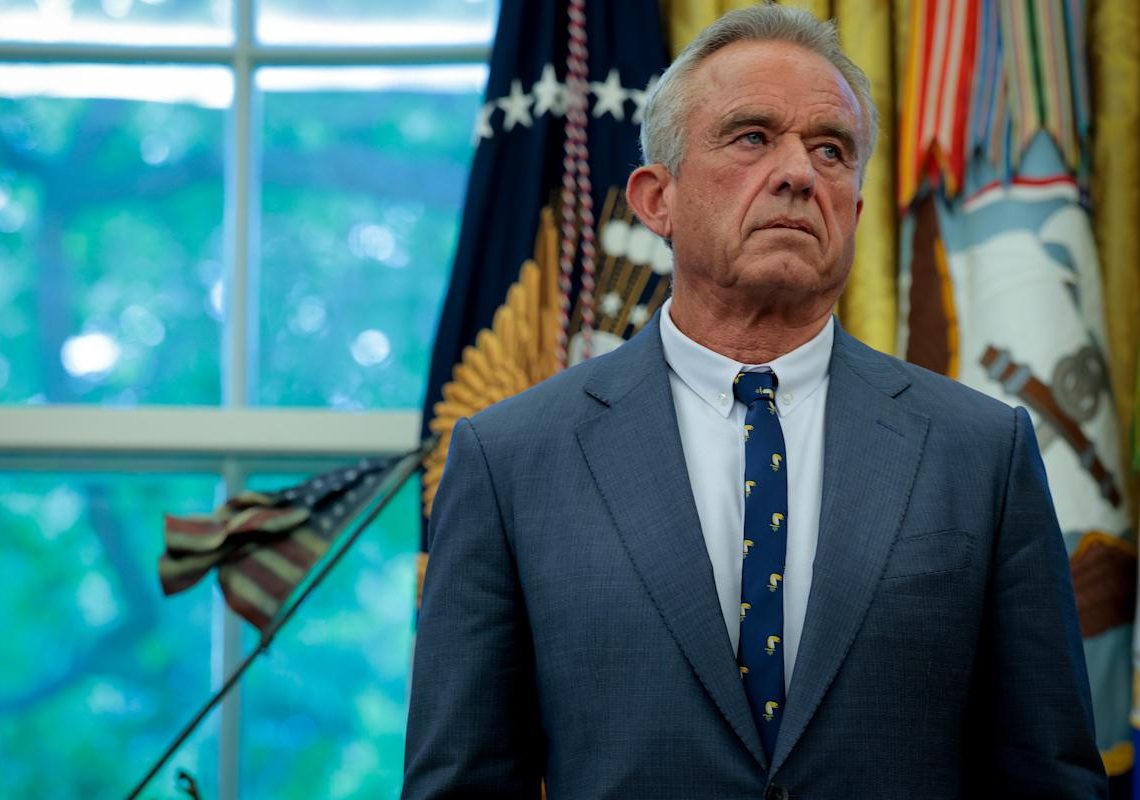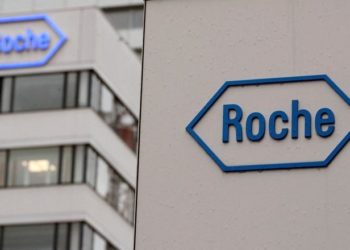Robert F. Kennedy Jr. took the stage inside his massive health department recently and declared artificial food colorings would soon be phased out of the U.S. food supply, drawing cheers from supporters holding signs reading “MAHA Moms” and “Better Food, Brighter Futures.”
The Department of Health and Human Services had reached an “understanding” with the powerful food industry, said Kennedy, the nation’s top health official, to voluntarily remove six synthetic dyes by the end of 2026.
In the days after the event, several companies issued statements indicating a desire to work with the administration, and at least two said they would remove dyes from popular products by the end of this year.
But the announcement also unleashed confusion among food officials who said there had not been an industry-wide commitment to excise the dyes by next year, according to four people involved in the food industry. One food industry official, who, like others in this article, spoke on the condition of anonymity to describe private conversations, referred to the timeline as “aggressive” and said companies are considering how to respond – particularly as they seek to forge a good relationship with the health and human services secretary.
The episode underscores how Kennedy’s calls for sweeping change to “Make America Healthy Again” – his initiative to root out childhood illness and chronic disease – will require leaning on the industry, states and, in some cases, other federal agencies to rapidly accomplish one of his signature policy agendas.
Kennedy is attempting to revolutionize “a system that is really profitable,” said Helene Leeds, a self-identified MAHA mom who runs a dietitian program with her daughter, Penelope, who lost over 150 pounds by focusing on whole foods.
“How much can he actually do?” said Leeds, who said she is a fan of Kennedy. “There is momentum, clearly.”
– – –
‘Wild on the food’
Last fall, Donald Trump promised Kennedy could “go wild on the food” if Trump won back the White House, and he selected Kennedy to lead HHS a little over a week after his victory. Kennedy has spent his first months as secretary telegraphing the start of his agenda.
In addition to his announcement on food dyes, he directed the Food and Drug Administration to explore tightening a loophole that has been allowing food companies to put chemicals in their products without notifying the nation’s food regulators. He ordered a review of baby formula ingredients. And he recently declared that “sugar is poison.”
Kennedy, who founded a prominent anti-vaccine group, has remained a polarizing figure, and public health experts have been alarmed by his response to the measles outbreak. Yet some of Kennedy’s food agenda has found support on both the right and the left, with nutrition experts and Democrats saying they align with him on the need to change how Americans eat. But they have argued his widespread purge of 20,000 federal health workers threatens to undermine his MAHA goals and say they believe he’s missing an opportunity to also focus on other drivers of chronic disease, such as tobacco and alcohol use.
“Kennedy, working with DOGE, has created a damaged infrastructure to execute the very agenda that they’re hoping to move forward,” said Susan Mayne, who led the FDA’s food center during the Obama, Trump and Biden administrations, before departing in 2023.
Kennedy is using his bully pulpit to publicly deride the ingredients in food, as he seeks for companies to voluntarily rid their products of food dyes, which some studies have associated with hyperactivity and behavioral effects in children. HHS said in a statement that food companies are “eager to engage in discussions about phasing out these dyes to promote a healthier America.” The FDA is charged with regulating chemicals in food, and Kennedy and his allies have said there are levers they will pull if companies don’t oblige voluntarily.
“The industry is going to play ball,” said Calley Means, a White House senior adviser. “If they don’t, the commissioner of the FDA has made clear that they’ll use all tools at their disposal. This is not a negotiation. The administration is not negotiating over poisoning kids.”
The Post contacted more than 10 major food companies. Some said they planned to take action or have already been removing synthetic dyes from food, while others noted it was an ongoing conversation and did not give a firm timeline.
General Mills said the “vast majority” of its products do not contain artificial colors, while adding that the company is “committed to continuing the conversation with the administration.” WK Kellogg Co, which is the U.S. cereal business spun off from what was formerly commonly known as Kellogg’s, said it is reformulating its cereals to ensure those served in schools are dye-free and will work with the administration to “identify ways to effectively remove” colors.
During an April 24 earnings call, PepsiCo said major products like Tostitos and Lay’s will transition away from artificial colors by the end of the year. It did not say whether it was removing dyes from all products by 2026, noting the company will migrate to natural colors or “at least provide” natural color options within the next couple of years.
And on Monday, Tyson Foods said it had been “proactively reformulating” products with dyes, saying the colors are expected to be removed from production by the end of the month.
But improving childhood obesity rates is going to require a lot more than the current “low-hanging fruit” the Kennedy team is pursuing, said Marion Nestle, a retired professor of nutrition, food studies and public health at New York University. She pointed to the cancellation of USDA programs that helped food banks and schools buy from local farmers as running counter to Kennedy’s goals.
In a statement, HHS said Kennedy is “determined to find the root causes of the chronic disease epidemic, including the toxic chemicals in our food supply.”
“The Secretary’s vision for a streamlined Department will work to combat chronic disease, improve nutrition, and enhance food safety for the American people,” an HHS spokesperson said.
– – –
‘A growing political movement’
To enact his agenda, Kennedy is also banking on cooperation from the U.S. Department of Agriculture – which regulates school lunches, some pesticide use and food stamps – and leaning on governors and state lawmakers.
Both HHS and the USDA are charged with issuing the next iteration of the Dietary Guidelines for Americans, a publication providing recommendations every five years for what Americans should eat to promote health that is the cornerstone of federal nutrition policy.
USDA Secretary Brooke Rollins, a longtime Trump ally who grew up on a farm, was not Kennedy’s and his allies’ top choice for the Cabinet spot, according to multiple people familiar with the discussions who spoke on the condition of anonymity to speak freely. The Agriculture Department has a long-standing reputation for being friendly to the industry, while Kennedy has claimed food companies have been allowed to “mass poison” American children.
One of Rollins’s key staffers is her chief of staff, who served as a top official at trade groups promoting seed oils – seemingly flying in the face of the MAHA movement. Kennedy has recently publicly praised Steak ’n Shake for moving away from them.
But in the past few months, Kennedy and Rollins have developed an “incredible chemistry” despite their different backgrounds, said Vani Hari, an author and activist known as the Food Babe who has allied with Kennedy. The two Cabinet secretaries have traveled together, touring a farm in Texas and previously going to a Virginia school; an HHS spokesperson said they have a “mutual commitment to restoring public trust in food policy.”
This comes as Kennedy has crisscrossed the country in a concerted effort to push states to adopt measures targeting the food supply, school lunches and the Supplemental Nutrition Assistance Program (SNAP) – even in conservative states that historically decried such policies as overregulation by the “nanny state.”
“The governors see that the Make America Healthy Again movement is a growing political movement,” said Hari. “So they want to be part of this. They don’t want to be seen as someone who is in the black eye in this movement.”
Kennedy and his allies argue that federal SNAP dollars shouldn’t go toward purchasing products they say are major drivers of poor health and obesity. The moves have faced fierce resistance from the beverage industry, which is lobbying against the plans. And anti-hunger advocates question the legality of the move, while also arguing that the proposals amount to punishing the poor by taking choices away from them.
Four Republican states have formally asked for the federal government’s permission to bar the use of food stamps to buy soda and in some instances candy as well. Rollins has indicated that her department will move quickly to green-light the state efforts, even traveling to Arkansas to tout the state’s plan.
Meanwhile, at least five states have passed legislation cracking down on food dyes and other additives from being used in school lunches or restricting the sale of products containing such ingredients in their states, according to the nonprofit Environmental Working Group. Opponents of such dyes argue the food industry sees the writing on the wall.
The Consumer Brands Association, a food industry trade group, developed policy options for removing colors from the food supply after the group met with Kennedy in March, according to a document sent to HHS and obtained by The Post. The document, marked confidential and dated March 20, proposed submitting a petition asking the FDA to revoke the regulations allowing the use of the dyes, while also contending that state level action “stands to undermine the president’s leadership.”
While some state lawmakers credit Kennedy with driving momentum behind their bills, several food safety advocates argue efforts to change the U.S. food supply had already begun before Kennedy’s MAHA movement gained momentum.
Scott Faber, a senior vice president at the Environmental Working Group, which co-sponsored a 2023 California bill to prohibit red dye No. 3 and other additives from being sold in the state, said people across the political spectrum want safe food free of chemicals.
“I’m glad,” Faber said, “RFK has joined our movement.”
—
Video Embed Code
Video: Health and Human Services Secretary Robert F. Kennedy Jr. has big food goals for the nation. Some are based on science, but others are misleading.(c) 2025 , The Washington Post
Embed code:
Related Content
At a Kentucky farm, star racehorses help people fight a monster: Addiction
The post As RFK Jr. pledges food victories, he faces the realities of governing appeared first on Washington Post.



